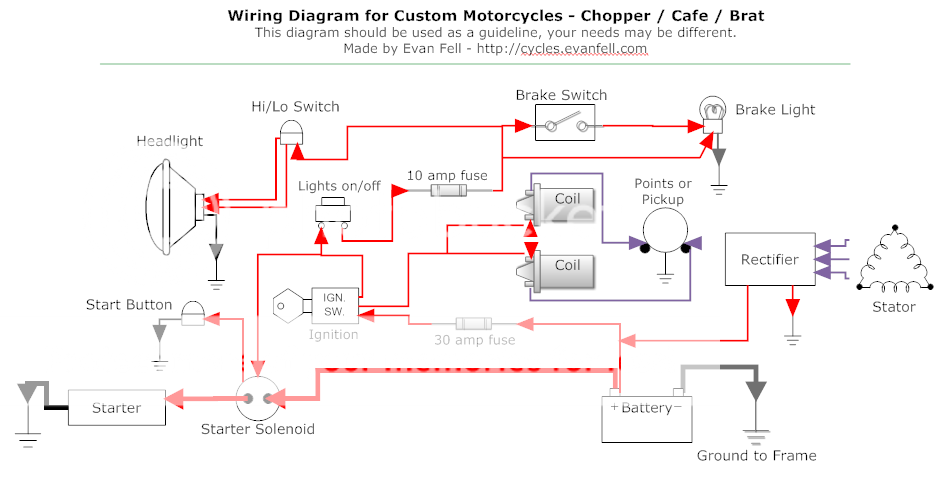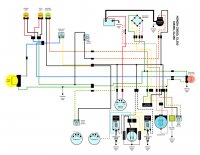timeconsuming
Foolish until proven intelligent.
Hey guys
I've been tearing things off my bike left and right and have come to the realization that there are really only a few things I want on my bike:
-kick start
-headlight hi/lo/off switch
-tail light + front & rear brake light switches
in other words:
-no electric start
-no signals
-no idiot lights (including no speedo & tach lights)
-no horn
-no kill switch (key is front and center, stock position on cb400f)
I've tried searching but have yet to find a truly bare bones wiring diagram to help me visualize just how little I'll need to keep my bike running daily with these small electrical components.
This is the closest I can find, and it's a great diagram:

Especially when compared to my stock diagram:

But I can't help but think someone's put together a bare minimum diagram that could help me out. Anyone able to point me in the right direction?
I've been tearing things off my bike left and right and have come to the realization that there are really only a few things I want on my bike:
-kick start
-headlight hi/lo/off switch
-tail light + front & rear brake light switches
in other words:
-no electric start
-no signals
-no idiot lights (including no speedo & tach lights)
-no horn
-no kill switch (key is front and center, stock position on cb400f)
I've tried searching but have yet to find a truly bare bones wiring diagram to help me visualize just how little I'll need to keep my bike running daily with these small electrical components.
This is the closest I can find, and it's a great diagram:
Especially when compared to my stock diagram:

But I can't help but think someone's put together a bare minimum diagram that could help me out. Anyone able to point me in the right direction?









